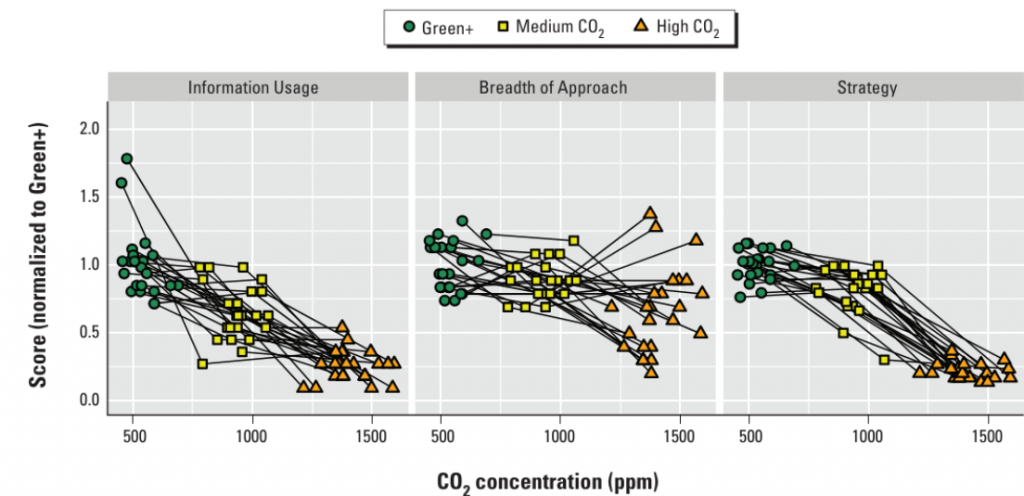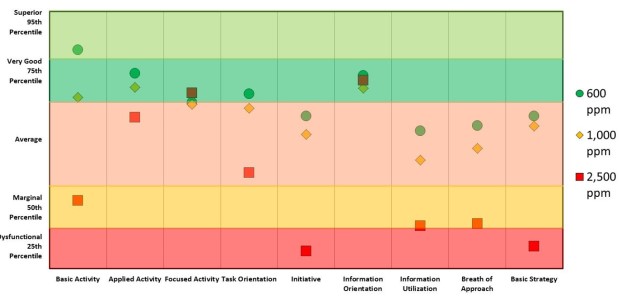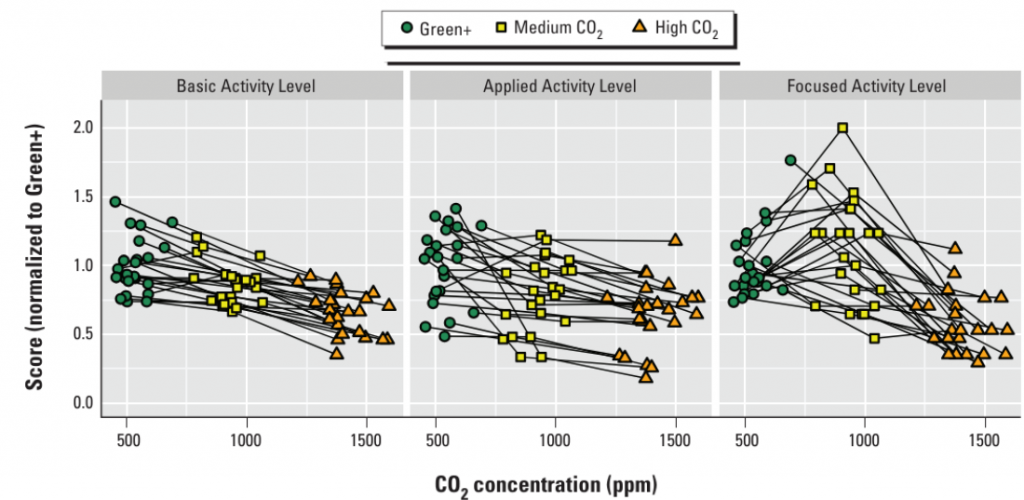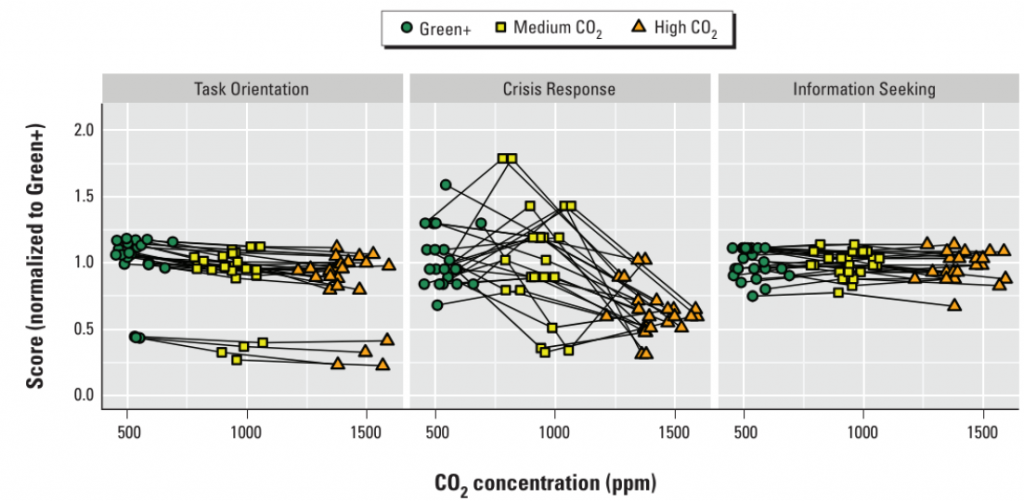Maximize Your Potential
Associations of Cognitive Function Scores with Carbon Dioxide, Ventilation, and Volatile Organic Compound Exposures in Office Workers: A Controlled Exposure Study of Green and Conventional Office Environments

Recent research has brought to light the profound impact of indoor air pollutants on cognitive function, underscoring the urgent need for proactive measures to uphold superior indoor air quality standards. The study conducted by Satish et al., titled “Associations of Cognitive Function Scores with Carbon Dioxide, Ventilation, and Volatile Organic Compound Exposures in Office Workers: A Controlled Exposure Study of Green and Conventional Office Environments” delves into the intriguing question of whether indoor carbon dioxide (CO2) and Volatile Organic Compound (VOC) levels have a direct impact on human cognitive function. This question is of paramount importance given the prevalence of indoor environments and the potential implications for productivity and well-being.
Set against the backdrop of a simulated office environment, the study meticulously examined the effects of varying CO2 and VOC concentrations on decision-making performance among participants. What emerged from this rigorously designed experiment was a stark correlation between IAQ levels and cognitive performance metrics. Notably, elevated CO2 levels were found to be significantly associated with diminished performance across a spectrum of cognitive domains, including strategic thinking, information utilization, and crisis response.

Delving into specifics, the study revealed that for a 400 parts per million (ppm) increase in CO2 concentration, there was a substantial 21% decrease in strategic decision-making performance and an alarming 44% decrease in crisis response performance. These findings underscore the profound impact of elevated CO2 levels on cognitive function, ringing alarm bells for organizations keen on optimizing workplace productivity and employee well-being.
These findings have significant implications for workplace productivity and safety. Considering the economic impact, it’s estimated that poor indoor air quality costs businesses approximately $15 billion annually in lost productivity due to absenteeism, reduced cognitive function, and decreased worker performance. In fact, the study suggests that even a modest improvement in indoor air quality, such as reducing CO2 levels from 1,000 ppm to 600 ppm, could lead to a productivity increase worth about $6,500 per employee per year.
The study suggests that existing guidelines for indoor CO2 levels may need to be revisited to better align with cognitive performance outcomes. Current guidelines primarily focus on ensuring adequate ventilation for a minimum standard of health, overlooking the potential cognitive impacts of elevated CO2 levels. By incorporating cognitive function into indoor air quality regulations, policymakers can better safeguard the cognitive well-being of individuals in indoor environments.
The research also underscores the importance of ventilation systems in mitigating the negative effects of CO2 on cognitive function. Effective ventilation not only improves air quality but also enhances cognitive performance by reducing CO2 concentrations. Investing in well-designed ventilation systems could thus yield significant benefits for both individuals and organizations in terms of productivity and decision-making effectiveness.
Central to the efficacy of the CERV system is its ability to introduce fresh outdoor air while simultaneously expelling indoor pollutants, thereby reducing CO2 and VOC levels. By continuously monitoring indoor air quality and dynamically ventilating based on real-time data, the CERV system ensures a dependable level of fresh air — an essential element for sustaining cognitive function and bolstering productivity.
The CERV system’s seamless integration into existing HVAC infrastructure and user-friendly interface ensure ease of adoption and operation, making it a practical and cost-effective solution for indoor air quality management. By aligning with evolving regulatory standards and guidelines for indoor air quality, the CERV system not only ensures compliance with health and safety regulations but also surpasses expectations for well-being and productivity.



























